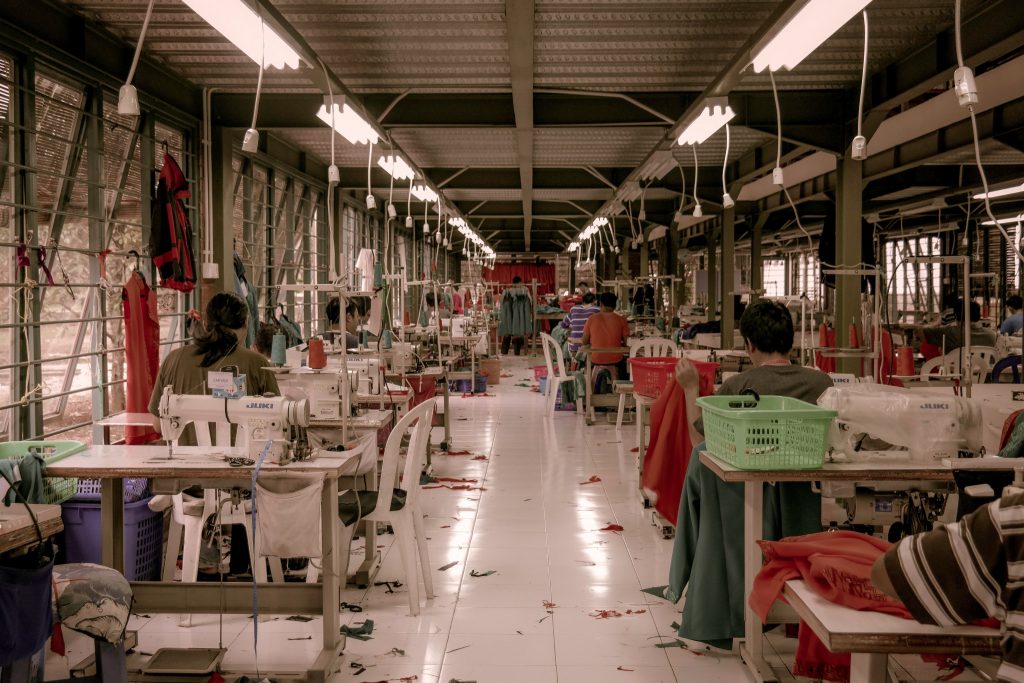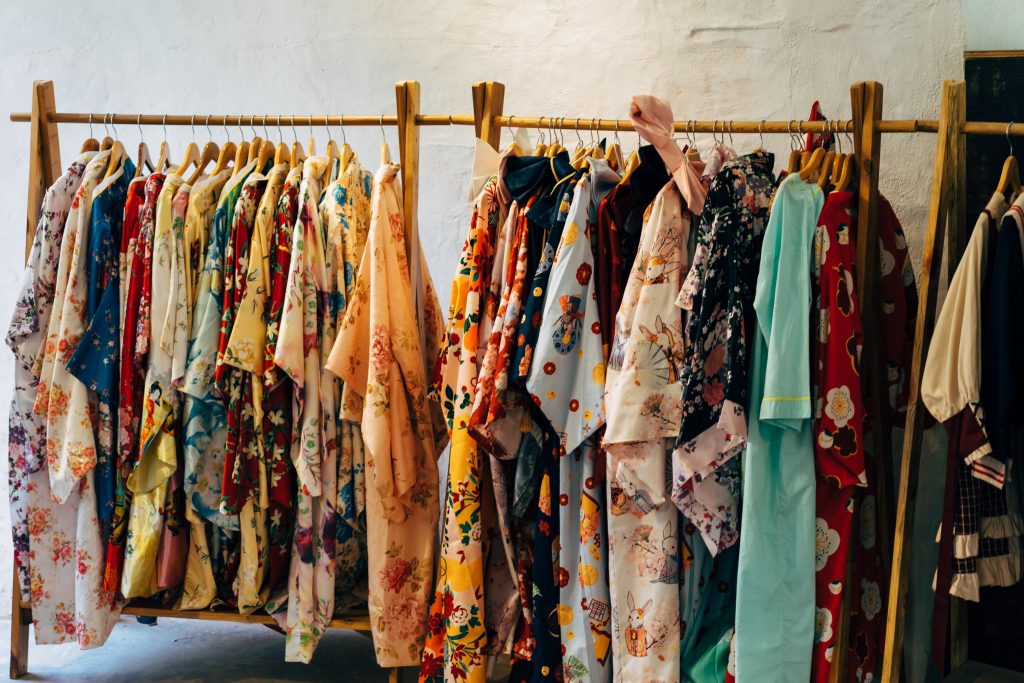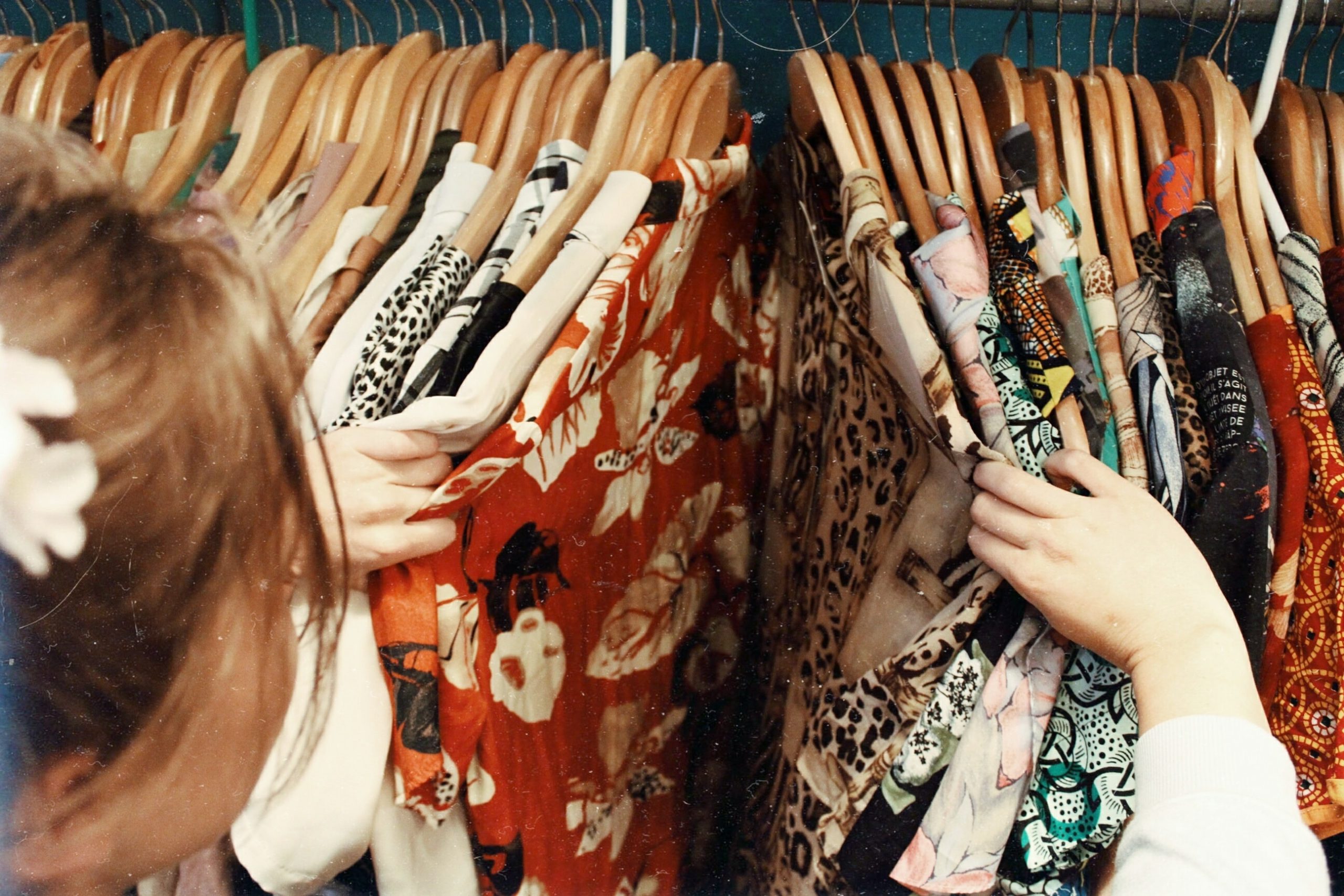“Buy less, choose well and make it last.” – Vivienne Westwood
Let’s start with a definition.
Fast fashion: where consumers buy cheap clothing, wear them a few times, and then throw them away.
Think TikTok Shein mega hauls, Missguided’s £1 bikini, and fashion company, In the Style, reproducing a bodysuit worn by Kylie Jenner for cheap mass production.
Fast fashion means fast production, fast sale, fast delivery. Clothes get made with speedy turnaround, in less-economically developed countries like Bangladesh or Vietnam, or in British factories with poor working conditions. Online searches for ‘cheap clothes’ increased 46.3% during the first coronavirus lockdown – those who cannot afford them can use Klarna and other credit services, allowing you to defer payment. And next-day delivery is in such high demand that it’s become the fastest-growing service in the last-mile environment, even though it would take a single tree over a month to absorb the carbon emissions of a single express delivery.
So fast fashion is just that: fast. It’s made fast, it’s sold fast, it’s delivered fast. In keeping with the theme, it’s also used fast.
In the UK, the average item is worn only 14 times before we get bored of it and throw it out. So we’re wearing cheap clothes that puts the environment and lives – let’s not forget the Bangladeshi Rana Plaza garment factory collapse in 2013 – in danger, only to wear them a handful of times before throwing them out for the next trendy thing.

But, Oh, you think, as you scroll down the website of your favourite fast fashion brand or wander the high-ceilinged rooms stocked with mass-produced cheap clothing, this isn’t actually that bad. How can buying one t-shirt really be a problem?
I’ll tell you. Or, I’ll tell you with a little help from the National Geographic.
It’s the cotton.
Cotton, that material all your favourite clothes are made out of, takes 2,700 litres of water to make into one t-shirt. One.
That’s enough water for one person to drink for 900 days.
And you might think – Oh, but we have so much water. And you’d be right, there’s an approximate 333 million cubic miles of water on Earth – but 97% of that is salty. Another 2% is trapped in snow and ice. That leaves 1% of the world’s water as a drinkable source for us, and of that 1%, a whopping 70% is used on our crops. And cotton is an incredibly thirsty crop.
In fact, we’re using so much of our water on fashion manufacture, that the United Nations Conference on Trade and Development considers fashion to be the second most polluting industry in the world, after oil. And it’s not difficult to see why: with 2,700 litres of water to make a t-shirt and 7,500 litres for a single pair of jeans, the fashion industry is consuming 93 billion cubic metres of water every year. As a bonus, it’s also dumping around half a million tons of plastic microfibre into the oceans each year.

So, we’re in agreement. Fast fashion: bad.
But what is there to do about it? What are the alternatives?
Here’s a few:
SHOP YOUR WARDROBE
Before you shop, take a look at what you already have. What’s crushed at the bottom of your drawers or hidden in the depths of your wardrobe? What do you already own that can function the way you want your new piece to?
You might be surprised to find things you’ve forgotten about when you unearth them from underneath everything else – and if you find things you don’t want, you’re more than welcome to donate or sell them and put that money towards buying something better made that will fill the void.
SHOP YOUR FRIENDS’ WARDROBES
Is your wardrobe a little lacklustre? What about your best friend’s? Why don’t you propose a trade?
In the olden days (AKA the year 2000) “swishing” became popular: throwing parties with the sole purpose of trading items of clothing with friends. While this practice has died out quite a bit, the theory is sound: give something away, get something new, spend absolutely no money and cost the environment nothing at all.
SHOP SECONDHAND
Thrift shops! Charity shops! Vintage shops! If you need to use the internet: eBay! Depop! ThreadUP!
Why buy brand new when you can buy something pre-loved?
SHOP ETHICAL
With the mainstream turn against fast fashion, ethical and sustainable brands are popping up everywhere to provide more options for your shopping. These items will be a little more expensive and the delivery will take a little longer – but they’ll also be better quality, with organic cotton, ethical production and – usually – plastic free.
MAKE & REPAIR
Don’t just throw your novelty pizza slice socks away when you’ve worn a hole in the heel. Take up the age-old art of darning (trust me, it’s actually very easy) and fix it!
Back in 2014-or-so, upcycling became all the rage on YouTube. This means there’s a massive archive of videos teaching you how to give your clothes a new lease of life – whether that’s through cropping, cutting, bleaching, tie-dying, or using the fabric for something else entirely.
And if you get into it, you might even start looking at making your own clothes too and getting total choice over what goes into them.
To finish up, here’s a little extra reading on the subject (and a handy listicle of sustainable clothing brands) plus a challenge you can get involved with if you’re interested in turning away from fast fashion:
- Ethical Consumer’s review of fast fashion
- Sustainable Clothing Brands
- Capsule Wardrobes: a limited closet made of specifically chosen pieces
- Sustainable Capsule Wardrobe advice
- Livia Firth’s #30Wears Challenge
By Bethany Climpson; Sustainability Engagement Assistant
 Sustainability
Sustainability Bethany Climpson
Bethany Climpson 1864
1864


